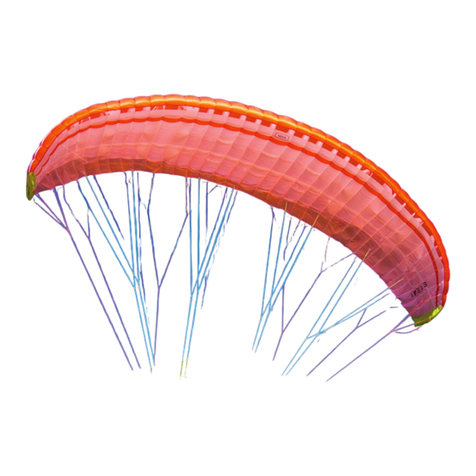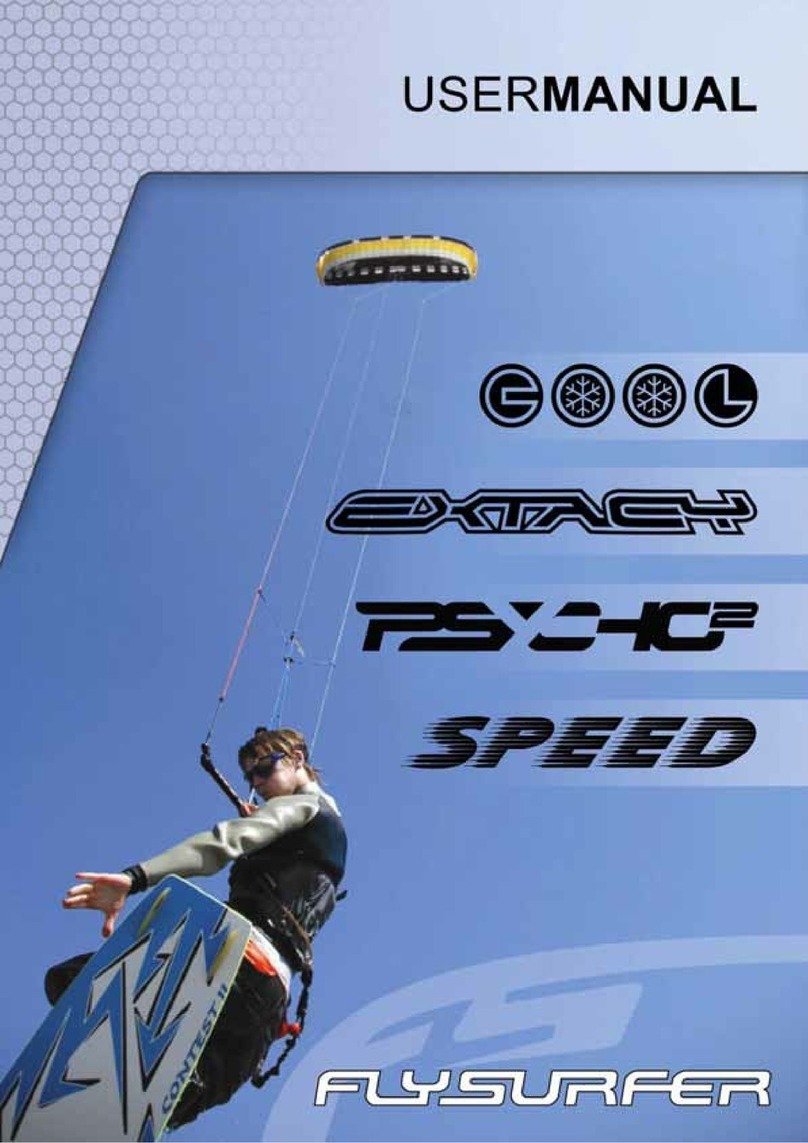Stec Fifty Five X Owner's manual

D
E
C
R
I
N
C
R
HDG NAV APR REV TRIM ALT GS VS
RDY
CWS
FAIL
GPSS
VS x 100
F FX
IFTY IVE

3rd Ed. Sep 30, 06 i
S–TEC
List of Effective Pages * Asterisk indicates pages changed, added, or deleted by
current revision.
PageNo. Issue
* 3-7 Apr 15,07
3-11 Mar15,07
* 4-3 Apr 15,07
Record of Revisions Retain this record in front of handbook. Upon receipt of a
revision, insert changes and complete table below.
Revision Number Revision Date Insertion Date/Initials
1st Ed. Nov 08, 00
2nd Ed. May 31, 02
3rd Ed. Sep 30, 06
1st Rev. Mar 15, 07
2nd Rev. Apr 15, 07
2nd Rev. Apr 15, 07

ii 3rd Ed. Sep 30, 06
S–TEC
Page Intentionally Blank

3rd Ed. Sep 30, 06 iii
S–TEC
Table of Contents
Sec. Pg.
1 Overview...........................................................................................................1–1
1.1 Document Organization....................................................................1–3
1.2 Purpose..............................................................................................1–3
1.3 General ControlTheory....................................................................1–3
1.4 ModesofOperation...........................................................................1–4
1.4.1 RollAxisControl.................................................................1–4
1.4.2 PitchAxisControl...............................................................1–4
1.5 BlockDiagram....................................................................................1–4
2 Pre-FlightProcedures...................................................................................2–1
2.1 Power-UpTest....................................................................................2–3
2.2 Pre-FlightTest....................................................................................2–6
3 In-FlightProcedures......................................................................................3–1
3.1 NormalOperatingProcedures........................................................3–3
3.1.1 Heading(HDG)Mode........................................................3–3
3.1.2 Navigation(NAV)Mode......................................................3–3
3.1.2.1 PilotSelectableInterceptAngle........................3–6
3.1.3 NavigationGPSS(NAVGPSS) Mode...............................3–7
3.1.3.1 PilotSelectableInterceptAngle........................3–7
3.1.4 AltitudeHold (ALTHOLD) Mode.......................................3–8
3.1.5 Vertical Speed(VS) Mode.................................................3–8
3.1.6 ControlWheel Steering (CWS) Mode .............................3–9
3.1.7 ElevatorTrim.......................................................................3–9
3.1.7.1 ManualElevator Trim.........................................3–9
3.1.7.2 AutomaticElevatorTrim....................................3–10
3.1.7.3 ManualElectric ElevatorTrim..........................3–11

iv 3rd Ed. Sep 30, 06
S–TEC
3.2 PrecisionApproachProcedures.....................................................3–12
3.2.1 Straight-InILSApproach....................................................3–12
3.2.1.1 Software Revision5 andAbove......................3–12
3.2.1.2 Software Revision 4 and Below......................3–14
3.2.2 ILSApproachwith ProcedureTurn................................3–15
3.3 Non-PrecisionApproachProcedures............................................3–15
3.3.1 Straight-InBack CourseApproach..................................3–15
3.3.1.1 PilotSelectable InterceptAngle.......................3–17
3.3.2 Back CourseApproach with Procedure Turn...............3–18
3.3.3 Straight-In LOCApproach................................................3–21
3.3.4 Straight-InVORApproach.................................................3–23
3.3.5 LOCApproachwith ProcedureTurn..............................3–25
3.3.6 VORApproachwith ProcedureTurn..............................3–28
3.3.7 NAVGPSSApproach..........................................................3–31
3.4 FlightDirectorOperation..................................................................3–31
3.4.1 FD/APMode.........................................................................3–31
3.4.2 FDMode...............................................................................3–32
3.5 YawDamperOperation....................................................................3–33
3.5.1 AUTOMode..........................................................................3–34
3.5.2 ONMode..............................................................................3–34
3.5.3 YawDamperTrim..............................................................3–34
3.6 AutopilotDisconnect........................................................................3–34
3.7 AutomaticTrimDisable....................................................................3–34
4 OperatingParameters..................................................................................4–1
4.1 RollAxisLimits..................................................................................4–3
4.2 PitchAxisLimits.................................................................................4–3
5 Glossary...........................................................................................................5–1

3rd Ed. Sep 30, 06 v
S–TEC
List of Figures
Fig. Pg.
1–1 System FiftyFive XBlockDiagram..............................................................1–5
2–1 APDisplay,AllAnnunciationsat Power-Up................................................2–4
2–2 APDisplay,SoftwareRevision Number.....................................................2–4
2–3 APDisplay, Readyfor Operation.................................................................2–4
2–4 APDisplay, Programmer/Computer Failure.............................................2–5
2–5 APDisplay,TurnCoordinatorFailure.........................................................2–5
2–6 APDisplay, HDG ModeEngaged (Pre-Flight) ..........................................2–7
2–7 AP Display, HDG andALT HOLD Modes Engaged (Pre-Flight)..............2–7
2–8 AP Display, CWS ModeArmed or Engaged, 0 FPM (Pre-Flight).............2–9
2–9 AP Display, CWS Mode Engaged, 500 FPM Climbing (Pre-Flight)........2–9
2–10 AP Display, CWS Mode Engaged, 500 FPM Descending (Pre-Flight)...2–9
2–11 APDisplay,NAV andVS Modes Engaged, 0 FPM (Pre-Flight)...............2–11
2–12 APDisplay,ManualTrim Prompts(Pre-Flight).......................................2–13
2–13 APDisplay,AutomaticTrimAdvisements (Pre-Flight)...........................2–15
2–14 RemoteAnnunciator Display, HDG, VS, and FD Modes Engaged (Pre-Flight)...2–15
2–15 APDisplay, Manual Electric Trim in Progress (Pre-Flight)....................2–18
3–1 APDisplay,HDG ModeEngaged................................................................3–3
3–2 APDisplay,NAVModeEngaged..................................................................3–3
3–3 RemoteAnnunciator Display, NAV Mode Engaged, CAP Condition.......3–5
3–4 RemoteAnnunciatorDisplay,NAVModeEngaged,CAPSOFTCondition.......3–5
3–5 RemoteAnnunciator Display, NAV Mode Engaged, SOFT Condition.....3–5
3–6 APDisplay, NAVAPRModeEngaged.........................................................3–6
3–7 RemoteAnnunciatorDisplay, NAVAPR Mode Engaged, CAP SOFTCondition....3–6
3–8 APDisplay, HDG ModeEngaged, NAV ModeArmed................................3–6
3–9 APDisplay,NAV GPSSMode Engaged......................................................3–7
3–10 APDisplay,HDGMode Engaged, NAV GPSS ModeArmed.....................3–7

vi 3rd Ed. Sep 30, 06
S–TEC
3–11 APDisplay,HDGandALTHOLD Modes Engaged...................................3–8
3–12 APDisplay, HDGand VSModes Engaged.................................................3–9
3–13 APDisplay,CWS ModeEngaged................................................................3–9
3–14 APDisplay, ManualTrim Prompts............................................................3–14
3–15 APDisplay,AutomaticTrimAdvisements.................................................3–11
3–16 APDisplay,Manual ElectricTrim in Progress..........................................3–12
3–17 APDisplay,NAVAPR andALTHOLD ModesEngaged...........................3–13
3–18 APDisplay,NAVAPRandALTHOLDModesEngaged,GSModeArmed...............3–13
3–19 APDisplay, NAVAPR andGSModes Engaged.......................................3–13
3–20 Straight-InILSApproach...............................................................................3–14
3–21 APDisplay,REVAPRModeEngaged,TrackLOCBackCourseInbound...........3–16
3–22 APDisplay, Straight-In Back CourseApproach.......................................3–16
3–23 APDisplay, HDG ModeEngaged, REVAPR ModeArmed.....................3–17
3–24 APDisplay,NAVAPRModeEngaged,TrackLOCBackCourse Outbound......3–18
3–25 APDisplay,REVAPRModeEngaged,TrackLOCBackCourseInbound...........3–19
3–26 BackCourseApproach with ProcedureTurn..........................................3–20
3–27 APDisplay,NAVAPRModeEngaged,TrackLOCFrontCourseInbound..........3–21
3–28 Straight-InLOCApproach............................................................................3–22
3–29 APDisplay,NAVAPRMode Engaged,TrackVORFrontCourseInbound.........3–23
3–30 Straight-InVORApproach............................................................................3–24
3–31 APDisplay,REVAPRModeEngaged,TrackLOCFrontCourseOutbound.......3–25
3–32 APDisplay,NAVAPRModeEngaged,TrackLOCFrontCourseInbound..........3–26
3–33 LOCApproach with ProcedureTurn........................................................3–27
3–34 APDisplay,REVModeEngaged,TrackVORFrontCourseOutbound............3–28
3–35 APDisplay,NAVAPRMode Engaged,TrackVORFrontCourseInbound.........3–29
3–36 VORApproachwith ProcedureTurn........................................................3–30
3–37 FDParallaxAdjustment................................................................................3–31

3rd Ed. Sep 30, 06 vii
S–TEC
3–38 APMaster Switch,FD/AP ModeEngaged................................................3–31
3–39 FDDisplay,FD/APMode Engaged...........................................................3–32
3–40 APMaster Switch,FD ModeEngaged......................................................3–32
3–41 RemoteAnnunciator Display, FD Mode Engaged..................................3–32
3–42 FDDisplay,FDMode Engaged.................................................................3–33
3–43 YawDamperMasterSwitch........................................................................3–33
3–44 YawDamperTrim Knob..............................................................................3–33
List of Tables
Table Pg.
2–1 Power-UpTest...............................................................................................2–3
2–2 Pre-FlightTest...............................................................................................2–6

viii 3rd Ed. Sep 30, 06
S–TEC
Page Intentionally Blank

3rd Ed. Sep 30, 06 1-1
S–TEC
SECTION 1
OVERVIEW

1-2 3rd Ed. Sep 30, 06
S–TEC
Page Intentionally Blank

3rd Ed. Sep 30, 06 1-3
S–TEC
1.1 Document Organization
Section 1 Overview
Section 2 Pre-Flight Procedures
Section 3 In-Flight Procedures
Section 4 Operating Parameters
Section 5 Glossary
1.2 Purpose
This Pilot's Operating Handbook (POH) provides Pre-Flight and In-Flight
operating procedures for the S-TEC System Fifty Five XAutopilot (AP).
Note:
This POH must be carried in the A/C and made available to the pilot at
all times. It can only be used in conjunction with the Federal Aviation
Administration (FAA) approvedAircraft Flight Manual (AFM) or Aircraft Flight
Manual Supplement (AFMS). Refer to the applicable AFM or AFMS for
A/C specific information, such as unique ground tests, limitations, and
emergency procedures.
Note:
The System Fifty Five X autopilot is a tool provided to aircraft owners, that
serves to assist them with cockpit workload management. The ability of the
autopilot to provide optimum assistance and performance is directly
proportional to the pilot's knowledge of its operating procedures. Therefore,
it is highly recommended that the pilot develop a thorough understanding of
the autopilot, its modes, and operating procedures in Visual Meteorological
Conditions (VMC), prior to using it under Instrument Flight Rules (IFR).
1.3 General Control Theory
The System Fifty Five X is a rate based autopilot. When in control of the roll axis,
the autopilot senses turn rate, as well as closure rate to the selected course,
along with the non-rate quantities of heading error, course error, and course
deviation indication. When in control of the pitch axis, the autopilot senses
vertical speed, acceleration, and closure rate to the selected glideslope, along
with the non-rate quantities of altitude and glideslope deviation indication. These
sensed data provide feedback to the autopilot, which processes them in order to
control the aircraft through the use of mechanisms coupled to the control
system. In most aircraft, the roll servo is coupled to the ailerons. The pitch
servo is coupled to the elevator. Activation of roll axis control must always
precede activation of pitch axis control.
The optional autotrim function senses when the aircraft needs to be trimmed
about the pitch axis, and responds by driving the trim servo in the proper
direction to provide trim. The trim servo is coupled to the elevator trim tabs.
The optional yaw damper senses excessive adverse yaw about the yaw axis,
and responds by driving the yaw servo in the proper direction to provide
damping. The yaw servo is coupled to the rudder.

1-4 3rd Ed. Sep 30, 06
S–TEC
1.4 Modes of Operation
1.4.1 Roll Axis Control
Heading (HDG) Mode
Used to Turn onto a Selected Heading and Hold it
Navigation (NAV) Mode
Used to Intercept and Track a VOR Course
NavigationApproach (NAVAPR) Mode
Used to Intercept and Track a LOC and VOR Front Course Inbound
Reverse (REV) Mode
Used to Intercept and Track a VOR Back Course Inbound
ReverseApproach (REV APR) Mode
Used to Intercept and Track a LOC Back Course Inbound
Navigation Global Positioning System Steering (NAV GPSS) Mode
Used to Laterally Steer along a Course defined by GPS
Control Wheel Steering (CWS) Mode
Used to Simultaneously Hold Turn Rate and Vertical Speed
1.4.2 Pitch Axis Control
Altitude Hold (ALTHOLD) Mode
Used to Hold Altitude
Vertical Speed (VS) Mode
Used to Hold Vertical Speed
Glideslope (GS) Mode
Used to Intercept and Track Glideslope
1.5 Block Diagram
The System Fifty Five X Block Diagram is shown in Fig. 1-1.

3rd Ed. Sep 30, 06 1-5
S–TEC
Fig. 1-1. System Fifty Five X Block Diagram

1-6 3rd Ed. Sep 30, 06
S–TEC
Page Intentionally Blank

3rd Ed. Sep 30, 06 2-1
S–TEC
SECTION 2
PRE-FLIGHT PROCEDURES

2-2 3rd Ed. Sep 30, 06
S–TEC
Page Intentionally Blank

3rd Ed. Sep 30, 06 2-3
S–TEC
2.1 Power-Up Test
Perform the actions shown in Table 2-1. For each action, verify the corresponding
response where applicable.
Table 2-1. Power-Up Test
ACTION RESPONSE
1. Set Yaw Damper Master Switch
to OFF position (if installed). ------
2. Set Trim Master Switch to OFF
position (if installed). ------
3. Set Battery Master Switch to ON
position. ------
4. Set Avionics Master Switch to ON
position. ------
5. Set Autopilot Master Switch to one
of the following positions, whichever
is applicable:
All annunciations appear on AP
display as shown in Fig. 2-1 for 10
seconds, and then extinguish.
FD/AP (Flight Director Installed)
AP (No Flight Director)
For Programmer/Computers with
serial number greater than 3001,
software revision number briefly
appears on AP display between 10
and 20 seconds following power-up,
as shown in Fig. 2-2.
RDY annunciation alone re-appears
on AP display within 3 minutes, as
shown in Fig. 2-3 (Notes 1, 2).
Notes:
1. Should a Programmer/Computer failure be detected, the FAIL annunciation
alone will re-appear on the AP display as shown in Fig. 2-4, and the autopilot will
not operate.
2. Should a Turn Coordinator failure be detected, the AP display will remain
blank indefinitely as shown in Fig. 2-5, and the autopilot will not operate.

2-4 3rd Ed. Sep 30, 06
S–TEC
Fig. 2-1. APDisplay,AllAnnunciations at Power-Up
Fig. 2-2. APDisplay, Software Revision Number
Fig. 2-3. APDisplay, Ready for Operation

3rd Ed. Sep 30, 06 2-5
S–TEC
Fig. 2-4. AP Display, Programmer/Computer Failure
Fig. 2-5. AP Display, Turn Coordinator Failure
Other manuals for Fifty Five X
1
Table of contents
Popular Aircraft manuals by other brands
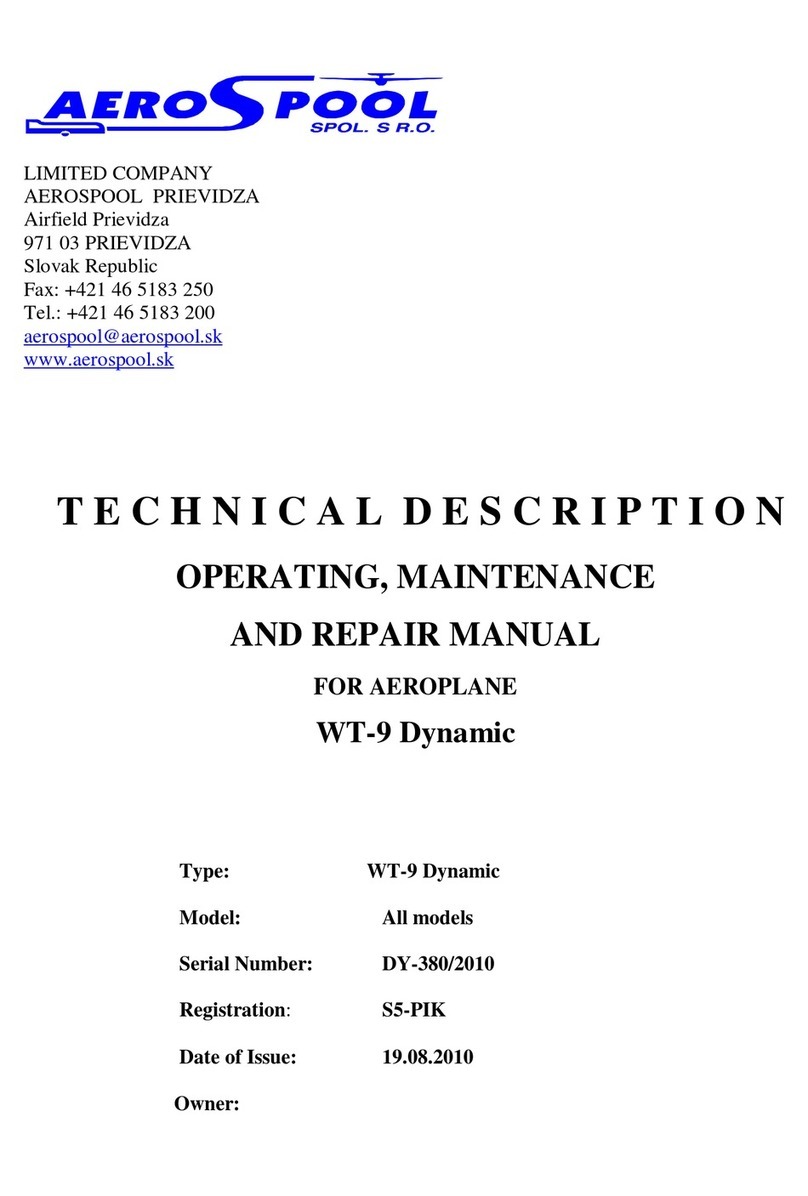
Aerospool
Aerospool WT-9 Dynamic Technical description and operating instructions
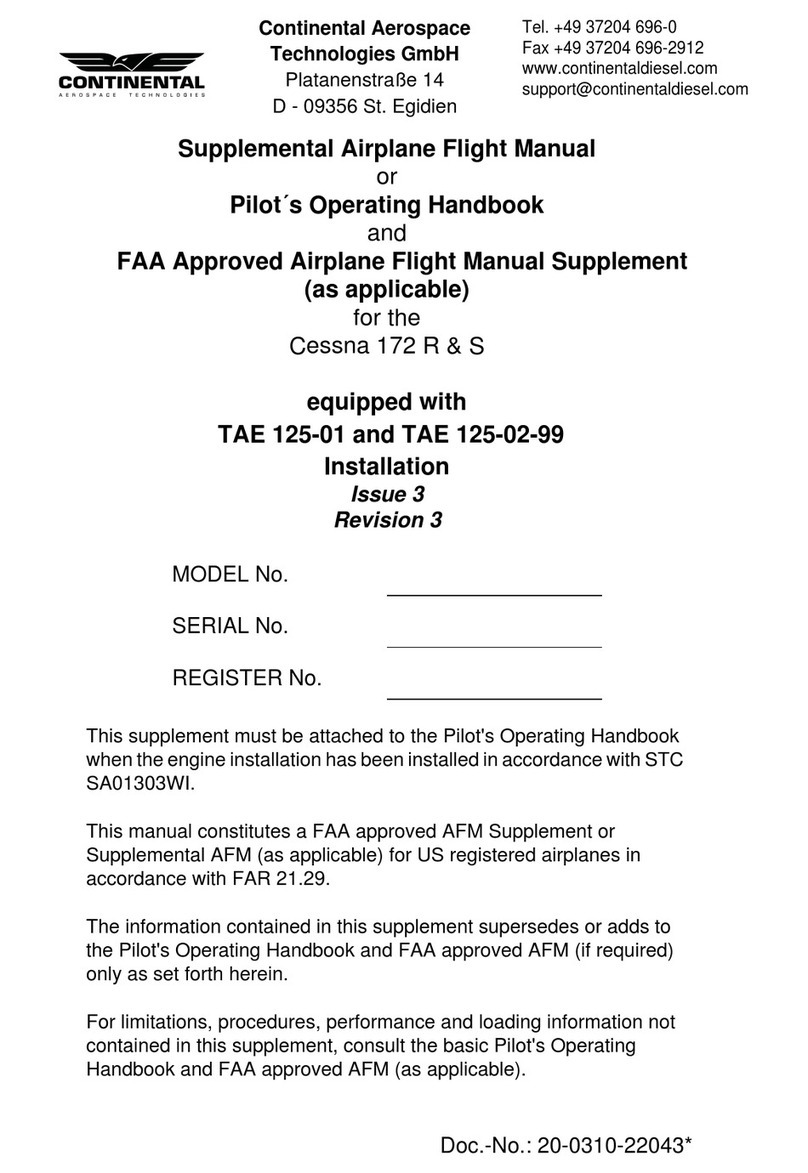
Cessna
Cessna 172R Pilot operating handbook

czech sport aircraft
czech sport aircraft PS-28 cruiser Operating handbook
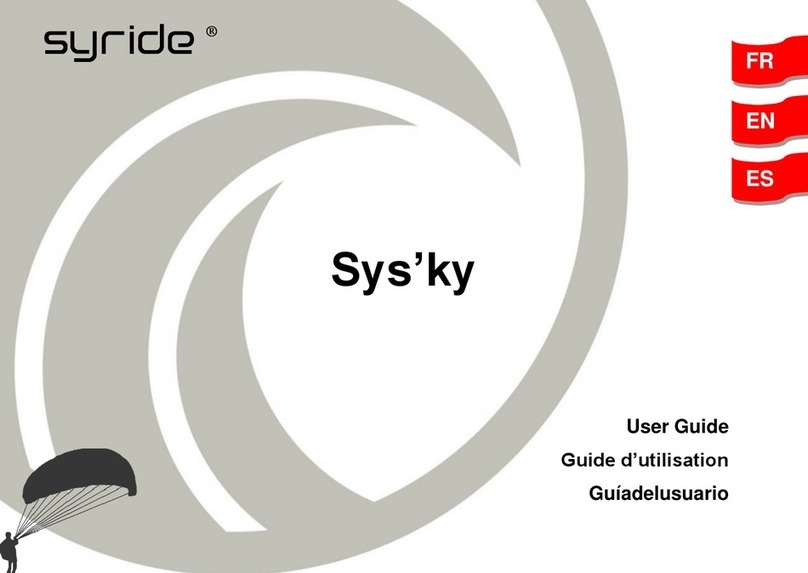
Syride
Syride Sys'ky user guide
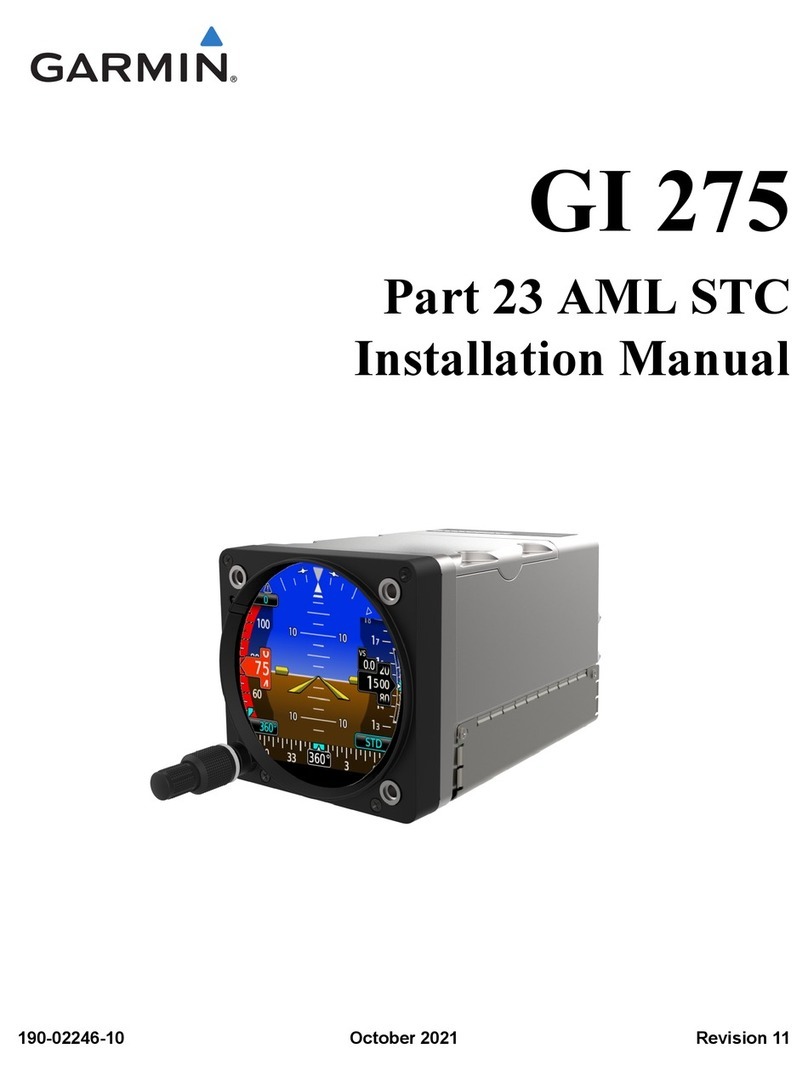
Garmin
Garmin GI 275 installation manual

Advance acoustic
Advance acoustic EASINESS 2 Getting started
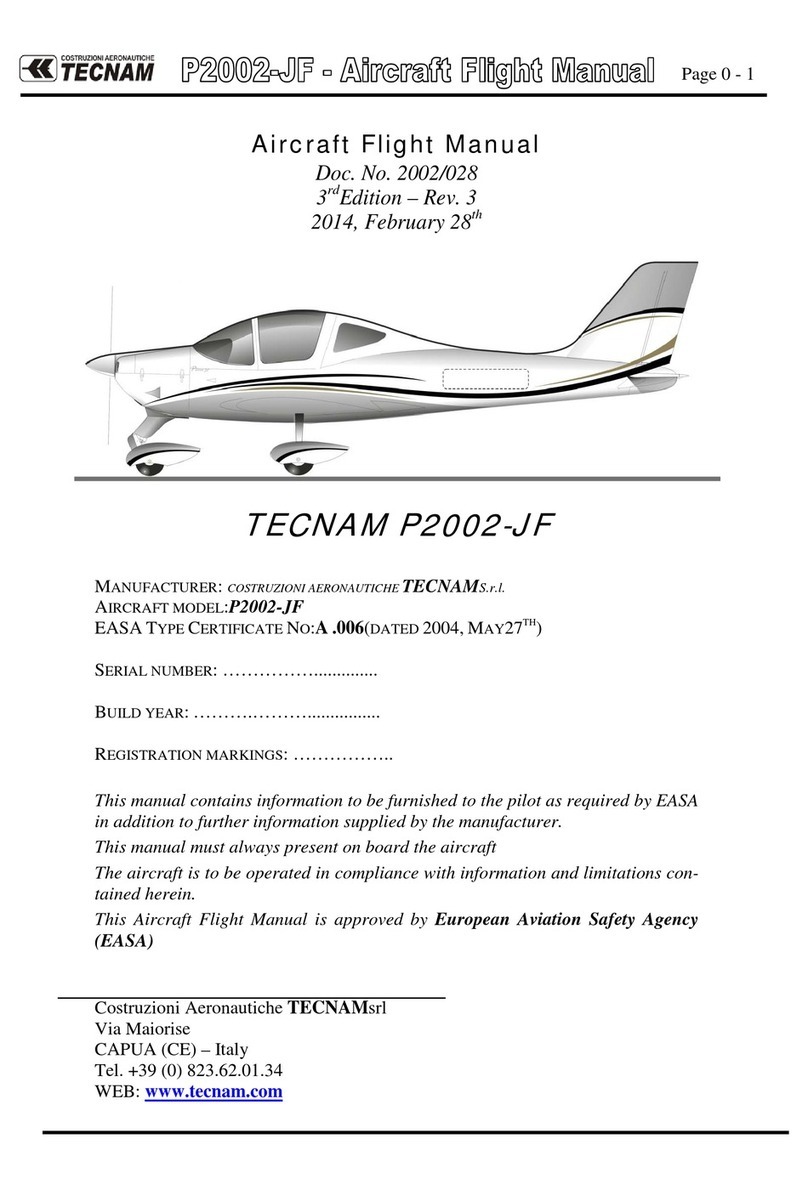
Tecnam
Tecnam P2002-JF Flight manual

Topmodel CZ
Topmodel CZ ELITE 020119 Assembly instructions

Cessna
Cessna C172S Nav III Training manual

Tecnam
Tecnam P92 Echo Classic Jabiru Maintenance manual

Super Ximango
Super Ximango AMT 200S Flight manual
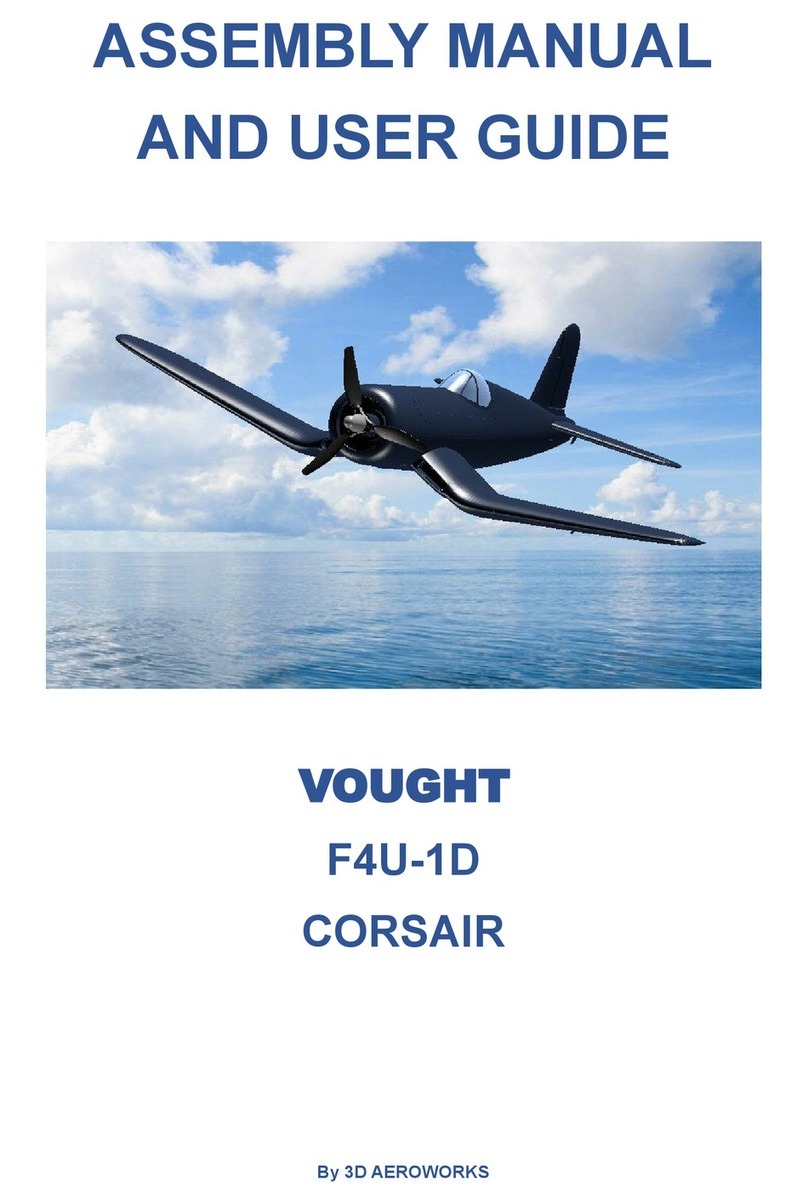
3D AEROWORKS
3D AEROWORKS VOUGHT F4U-1D CORSAIR Assembly manual and user guide
